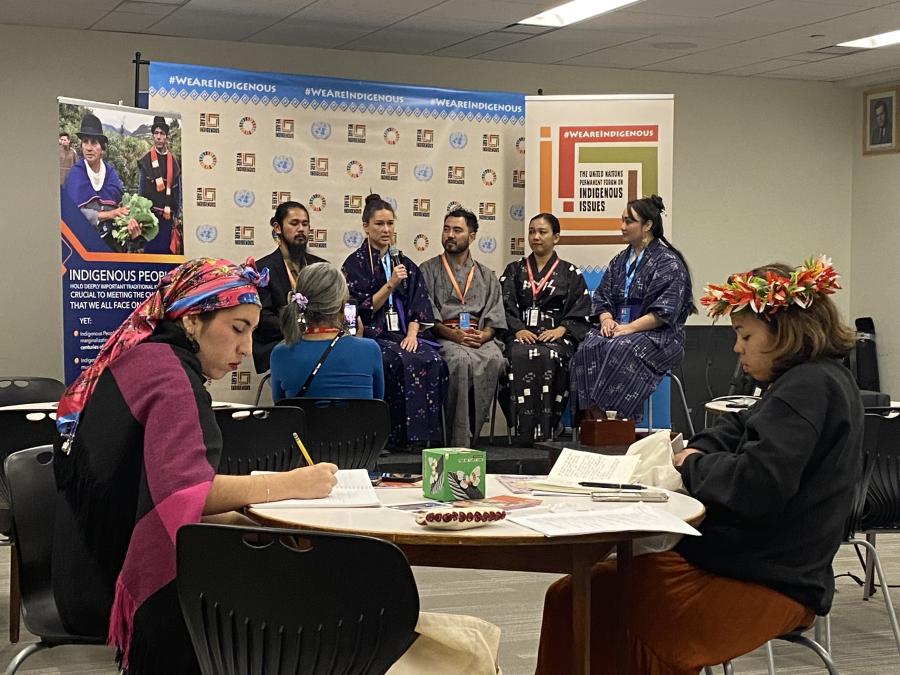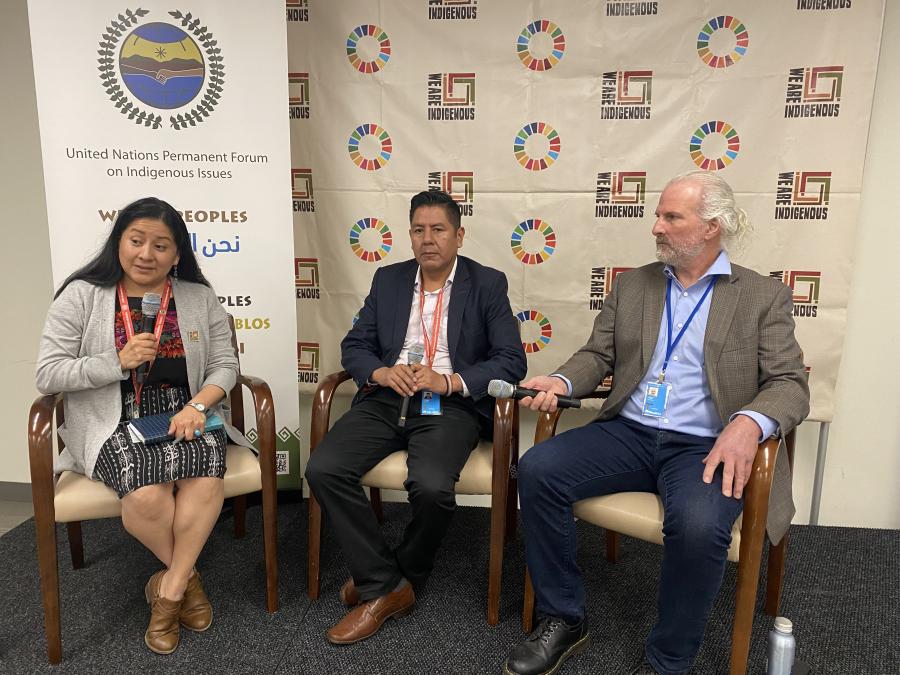Funding is the primary obstacle for indigenous peoples doing film work.
Throughout the past two decades, indigenous communities in Latin America have engaged in video production. Indigneous videomakers often link with supportive projects and institutions in countries throughout the Americas and beyond to generate funding and support training, production, and wider distribution. In many cases, indigenous media production has been reactive. It has been used to denounce violations of rights, counteract misrepresentation in mass media, and assert a community perspective on specific issues. Video has proven to be a powerful tool of empowerment and cultural continuity, and a means of generating awareness on important social, environmental, human rights, and land issues. For indigenous communities, it is more affordable than film, and digital technology has enabled communities with limited resources to produce high-quality images that can be screened at festivals or broadcast widely.
Indigenous media in Latin America has not followed a conventional audiovisual production process, nor does it circulate exclusively in film and video circuits. It inhabits a wide range of platforms, including film festivals, international meetings on indigenous rights, academic conferences, and local community meetings. It uses various production methods, styles, and formats. Limited funding, the collective nature of production, and a lack of continuity of projects have limited what films can be made. Other challenges include a universal lack of infrastructure and equipment, limited training that is usually compressed into short workshops, and indigenous media producers’ community obligations that make it difficult to fully devote themselves to production.
Finding Support
Many organizations have enabled indigenous video efforts to continue, but certainly not to prosper. Few videomakers make a living from their media skills and the basic infrastructure and equipment to engage in production is insufficient. In Latin America, funding for training, production, and festivals has come from five major sources: self-generated independent funds (autofinanciamiento); local grassroots community, indigenous, or media organizations; state or national indigenous funds and grants; international film or indigenous funds; and nonprofits, foundations and non-governmental organizations.
In order to raise money, indigenous videomakers often need assistance from professionals outside the community are familiar with available funds, possess the expertise and technical knowledge needed for the application process, and who can condense existing ideas, projects, or needs into the formal structure of applications. Though foundations receive proposals from around the world, most only provide applications in English and often require a high degree of synthesis of the project, not to mention extensive and expensive photocopying, image reproduction, and tape duplication.
Few funders do any outreach to indigenous communities. Rather, they distribute information to well-known directors and film schools who are more experienced and present fierce competition to indigenous communities. Few indigenous directors in Latin America have ever been to film school, and their work often has a Native audience in mind. Pacing, dialogue, and script forms are often unconventional.
A new training process and school of thought for indigenous video that takes indigenous reality into account is needed, said P’urhepecha videomaker Raúl Máximo Cortés during a panel on indigenous media at the October 2004 International Morelia (Mexico) Film Festival.
Another problem confronted by indigenous producers seeking funding is the collective nature of their work, since most foundations tend to give money to individuals and often require them to have academic or artistic credentials or letters of support from institutions. Indigenous fiction projects may be based on traditional stories that have a collective authorship, or may be produced through group training workshops that are subject to organizational or community approval. Negotiating these factors with foundations’ application processes is challenging.
Even when indigenous communities do pursue funding opportunities, their work is often political and may conflict with the views of funders, especially state funders. Many funders would rather avoid association with political expressions of any sort.
Despite these obstacles, indigenous videomakers continue to work. The genre is not “of national interest,” said P’urhepecha director Dante Cerano during the Morelia panel, but indigenous mediamakers find ways to produce their work with or without the funding. “It’s a question of identity, of combating racial and economic inequality.”
Once indigenous communities commit to video projects, they often help fill in funding gaps with in-kind donations. Sometimes, shoots are taken on as community projects known as tequios or mingas. Actors may accept to not be paid, local vendors loan wardrobes and props, and residents provide meals and lodging for the film crews. Local educational institutions may loan equipment and editing facilities, technicians may offer advice during their off-hours for minimal rates. While this community mentality has allowed the creation of indigenous work that otherwise would have failed, the negotiations it requires tends to slow down production. In addition, confusion sometimes arises regarding who receives whatever profits the video may bring in.
At the 2004 meeting of the Latin American Council on Indigenous People’s Film and Video/Consejo Latinoamericano de Cine y Comunicación de los Pueblos Indígenas (CLACPI) during the Seventh International Indigenous Film and Video Festival in Santiago, Chile, indigenous producers, directors, and communicators defined strategies to address some of their most pressing issues. Proposals included an exchange between existing projects and new works, a search for new models and methodologies in the training process, and broadcasting each other’s productions on a local level. Funding is still an urgent issue; collective distribution was mentioned as a possible source for funding in the future. A network of indigenous mediamakers has also started working to secure communities’ abilities to circulate messages that they find important to share with one another.
Amalia Córdova is the Latin American programs coordinator at the Film and Video Center of the National Museum of the American Indian. Special thanks to Juan José García, Ana Hidalgo, Patricio Mamani, and Jeanette Paillán.



